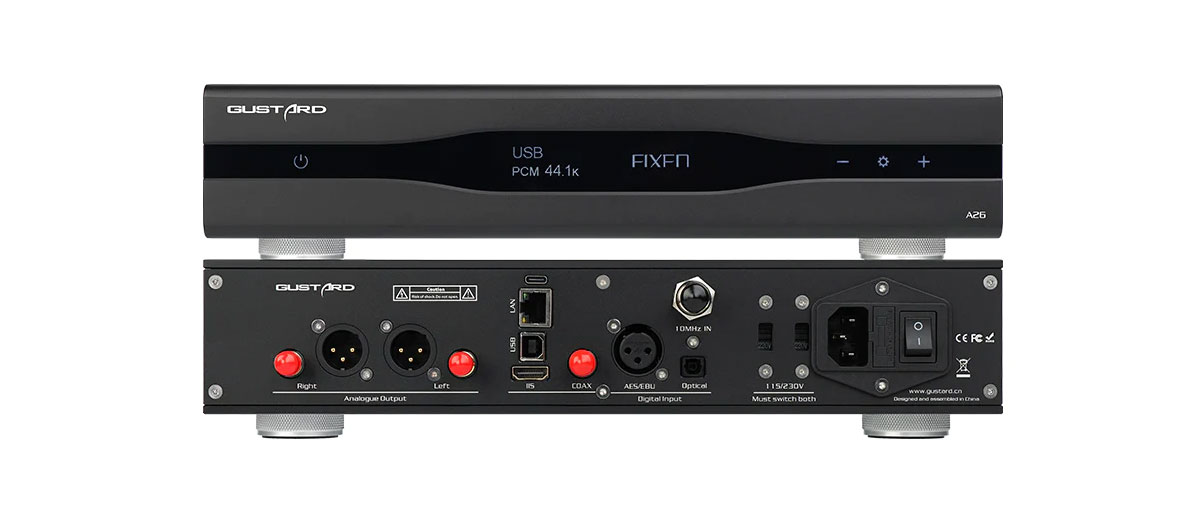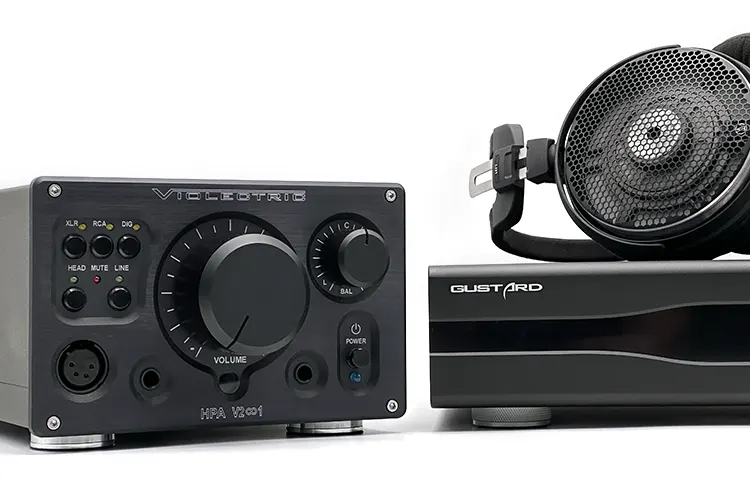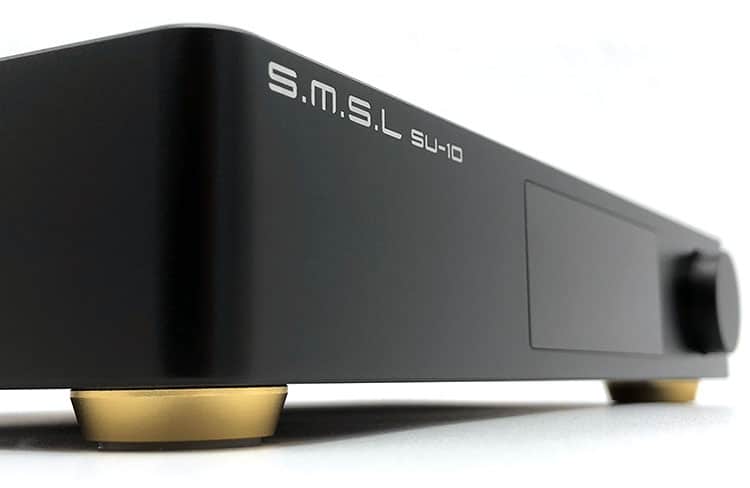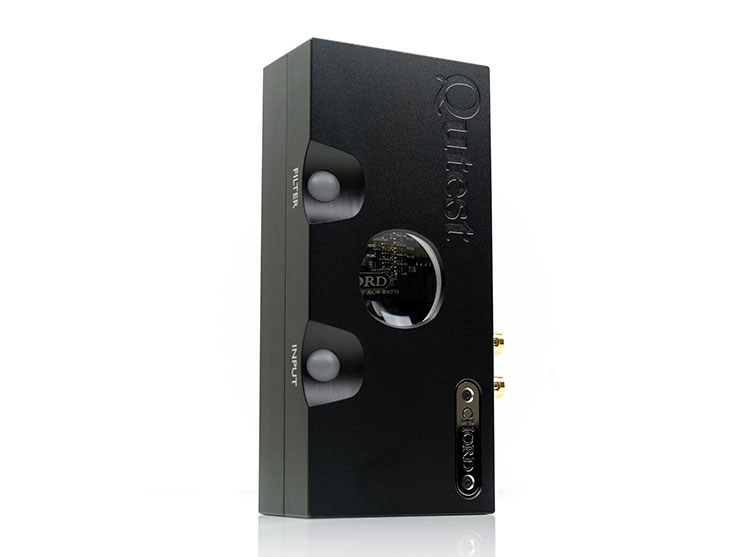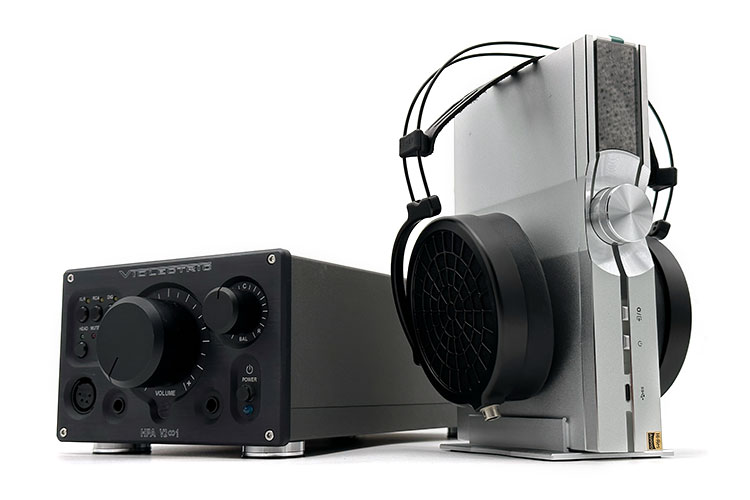Synergy
Pairings
Part of my early impressions is through the EarMen ST-Amp DAC/Amp since I had to do a quick test of the A26 after its arduous series of flights. It’s impressive that even with its entry-level pedigree, the amplifier section of the ST-Amp was able to show focus and grab a lot more than what its built-in DAC can provide as an all-in-one.
Utilizing another EarMen product, I connected the A26 to the EarMen CH-Amp together with my Audio-Technica ATH-ADX5000. The A26 did an amazing job at quelling the shoutier regions and filling in the weight of the two rather thinly voiced pieces of equipment I paired.
The smoothness and technical attribute of the A26 is forcing the CH-Amp and ATH-ADX5000 to work hard and match the resolution. I’d say the tonal balance achieved here will satisfy a lot of listeners.
Swapping headphones to the Dan Clark Audio Ether 2, with its rather tamed tuning compared to the ATH-ADX5000, the pairing got somewhat cold. Still, the Ether 2 remained revealing in key areas such as vocals plus there is a low-end planar dynamism that brings in some peppiness and bite to the A26.
Trying something different, I also used the ATH-ADX5000 with a Violectric V281. I prefer this pairing for easier listening since it complements the unaggressive A26 without ending up as too mellow.
Violins and horns don’t have the same scale as with the CH-Amp but the intricate layering and imaging are preserved. Electric guitars softened their attack but the dynamics and resolution pushes through.
The cool thing here is the friendlier upper midrange that plays well with the bright ATH-ADX5000. Also, turning to bass lines and synths, the roomier and more capable oomph doesn’t ruin the balance as it stays close to neutrality.
Select Comparisons
SMSL SU-10
Technical
The shiny dual AK4499EX DAC chips of the A26 may seem extravagant considering the additional discrete AK4191 chip it comes with but doubling up on chip count isn’t reserved for high-end gears.
Boasting a total of sixteen channels from its pair of ES9038PRO, the SMSL SU-10 at around half the cost is covering its bases for a balanced unit.
The SU-10 can’t stream via ROON, but if Bluetooth is enough, the SMSL DAC supports LDAC, APTX/HD, SBC, and AAC which the A26 does not. Here, the A26 separates from the familiar set of inputs available on the SU-10 by adding a LAN and BNC interface for proper streaming connectivity and internal clock upgrade.
Both units have two internal linear power supply that routes power separately to the digital and analog parts of the circuitry. Tech-wise, the A26 ends up being the more modern of the two in using a touch-sensitive interface rather than a multifunction knob.
Design
With a significant 1.86kg weight and wide package, the SU-10 isn’t easy to overlook in a desk setup. Next to the larger A26 though, it not only diminishes in authority but its design seems more simplistic in many ways as well.
The two main assets of the SU-10 are its gold feet accents and the high-resolution full-color display at the front of the unit. Those who find the plain UI of the A26 will enjoy the vibrant colors of the screen used by SMSL.
Performance
SMSL tuned the ESS chips of the SU-10 to come out with a gooey low-end that is thicker and slower than the A26. It consequently doesn’t match the punch the A26 gives to kick drums that leans tighter and properly layered.
The A26 is a much more resolving DAC that delineates reverb and subtleties found in a guitar twang. Adding some width at the cost of airiness, the SU-10 gives a more rigid tap to a piano accompaniment.
If you like a more forward midrange, the SU-10 with its slightly smoother vocal timbre is the way to go. I find that the A26 is closer to realism however plus it is aided by stronger feedback on whispery areas where the SU-10 fumbles a bit on the details.
Quite far in the area of resolution, the treble region shows the advantage of getting the more expensive machine. Electric guitars don’t feel as easy and steady. While it is still remarkable, it is missing the control I heard on the A26.
Chord Electronics Qutest
Technical
With AKM being a powerhouse name in the DAC chip manufacturing industry, it seems easier to simply rely on their off-the-shelf components.
Chord however got more involved when they opted to custom code an FPGA-based XC7A15T chip to their standards. Peer into the viewing glass of the Qutest and the Xilinx module can be appreciated.
The Qutest is not completely designed from scratch though. Based on the original Hugo2 DAC/Amp the Qutest system is now a few years older than the A26 which uses the latest chips from AKM.
What I appreciate about the Qutest are the two BNC digital inputs which can be triggered to play together or separately. Still, the Qutest does have a few features absent when compared to the A26 such as MQA, streaming, and balanced outputs to name a few.
Design
Taking the first half of its name, the Qutest looks cute compared to the A26. I have nothing against big or small DACs but one should consider where they’ll put their setup. For me, the Qutest can easily sit anywhere, which is one of the main reasons I haven’t sold it.
But sure, for something asking more than the sticker price of the A26, you’d think the Qutest will be big and bold like the Hugo TT2 and its other siblings. At least the Qutest has a neat trick that is always a treat to look at, the glowing viewing glass on top.
Without a proper screen like in the A26, users of the Qutest will have to take time to remember the meaning of the different colors indicated on the unit. There are two physical orbs for changing inputs, filters, and accessing the hidden settings.
Performance
The Qutest traverses the line of honesty just like the A26 and it also loosens up a bit on tonality by adding some well-placed personality here and there. To be honest, I wasn’t expecting the Qutest to need to fight as hard just to prove its worth against the A26.
On the lower frequencies, the Qutest showed a tighter trait on instrument placement. The A26 however is the one that readily displayed its nature through its richer thump that slightly lingered longer for room definition.
Strings disperse differently between the two. The A26 had a subtle and soft climax, while the Qutest gets springy and excited.
Details on the A26 may appear grainy when compared to the silkier performance of the Qutest. Taking it as an advantage, the Qutest gives vocals better width and life to the upper midrange. The A26 sounded just a little bit thinner in this area.
Listening to some live recordings, the A26 had a more subdued attitude to audience applause whereas the Qutest sounded sprightlier. Showing impressive skill, the raw yet refined riff of an electric guitar on the A26 sounded more developed than the hesitant retrieval I got from the Qutest.
iFi Audio NEO Stream
Technical
With a thoroughbred streaming engine ticking at the heart of the NEO Stream, iFi Audio squeezed three LAN inputs and a WIFI antenna. Making a statement, they even included a tiny little device called the OptiBox that promises to protect LAN signals.
Still, the two might not be built with the same intention but they can be a close rival depending on where the unit will sit in the chain. The A26 labels itself as a DAC unlike the NEO Stream except if it will only be used with ROON for example then it has a lone LAN input to serve the purpose.
While the lack of digital input limits the NEO Stream, its long list of digital outputs is surely an advantage for those who’ll use an external DAC. Adding to the mix are balanced and single-ended analog outputs enabled by a Burr-Brown chip.
Design
Like the A26, the NEO Stream follows the design of a close family member. This somehow dilutes the excitement unlike when an all-new chassis is launched but I’d say both the NEO Stream and the A26 had some bits and pieces that still make them stand out.
With a nimbler 1kg mass to move around, the NEO Stream can easily be placed anywhere and in any position. Lacking the space for a wide unit? The Neo Stream can stand vertically unlike the permanently wide stance of the A26.
The A26 traded its physical controls for touch sensors which impart a cleaner visual. On the NEO Stream, iFi Audio stubbornly used some wobbly physical buttons which depart from the tight fit of the unit.
Saving the NEO Stream from looking rudimentary, there is a small window for the retina-grade TFT display that can show album art in full color.
Performance
Both devices used as DACs offer a bit of flexibility to the sound just to tease. The A26 however is more detail oriented which becomes its crucial advantage if all the bells and whistles of the NEO Stream can be ignored.
For deep delineated reverb, I noticed that the NEO Stream is returning a crisper edge even though it is the softer sounding one when it comes to immense beats and kick drums. In the end, instruments are more spacious on the A26 as they get a more defined isolation and dispersion.
Plucking of the strings has more brilliance on the NEO Stream. The A26 stays subtle by encouraging each note with a more organic twang.
There is an improvement in texture when inspecting closely the midrange of the A26 over the NEO Stream. Having less width to its vocal presentation the Gustard DAC does open the scene a bit better.
Not to a fault, but the NEO Stream does gloss over some of the obvious details the A26 digs out. The dynamics on the A26 also helped its stay ahead of layering a busy rock song where the NEO Stream lagged in resolution.
Our Verdict
The nuance and control of the Gustard A26 over the entire frequency range is but a tiny portion of what makes it a compelling DAC. With a cleaner interface and a slight price advantage, the delta-sigma twin of the R26 is in it to conquer the segment.
The omission of the Bluetooth antenna is a curious case though. Trimming down $200 from the SRP Gustard seems to have plenty of room to include it at least.
Just like what I said in the beginning, choosing between this and the R26 can be a daunting assignment if you have no clear preference for DAC architecture. I wasn’t able to compare the two directly in this review but it is clear that this version is capable of going head-to-head with some higher-priced gear.
Gustard A26 Technical Specifications
- IIS/USB/LAN: DSD64~DSD512, PCM 44.1K-768K, MQA 8X
- COAX/AES/OPT: DSD64(DoP), PCM 44.1K-192K, MQA 8x
- LAN: Roon/UPnP/HQPlayer NAA (more in the future)
- 10M Clock input: 50 Ω BNC, 0dBm-20dBm, square wave 0.2-3.3V, sinewave 0.5-3.3V
- Frequency Response: 20-20kHz/+-0.2dB
- Dynamic range: >127dB
- Signal-to-noise ratio: >126dB
- Crosstalk: -139dB @ 1kHz
- THD+N: <=0.0001% @1kHz
- IMD: =0.001% @-1dbfs
- Signal-to-noise ratio: >126dB
- RCA: 2.5Vrms (VOLUME FIXED) 100Ω
- XLR: 5.0Vrms (VOLUME FIXED)100Ω
- Power Supply: AC115V/230V 50/60Hz
- Power Consumption: <30W
- Size: 330mm (Width)* 260mm (Length)* 65mm (Height) (Protrusion not included)
- Packing size: 420mm (Width) 360mm (Length)* 175mm
- Weight: 7Kg (with the package)
- Sandblasted aluminum alloy case: Silver or Black version

